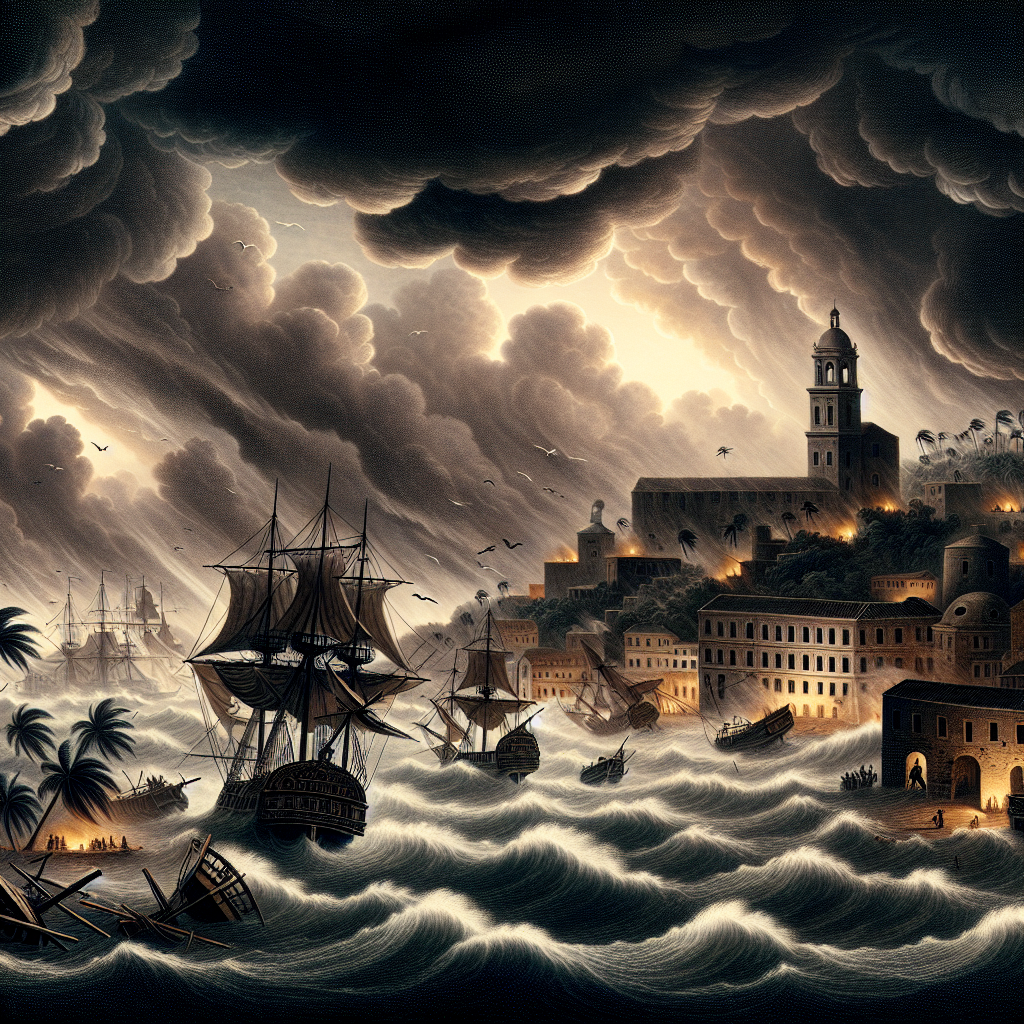The discourse surrounding climate change is often dominated by claims that human-induced factors have exacerbated the intensity of Atlantic tropical storms. Advocates of this viewpoint, termed “Climate Change Racketeers,” have leveraged media platforms to propagate the idea that current hurricanes are drastically more powerful than their historical counterparts. However, sediment studies and historical records suggest otherwise. Evidence shows that significant hurricanes have been battering the Atlantic for centuries, with notable intensity during the Medieval Warm Period (MWP), which lasted roughly from 950 to 1250 AD—a time characterized by warmer conditions in the North Atlantic.
Historical accounts provide further insight into the prevalence of hurricanes in the Atlantic, with Christopher Columbus documenting two particularly violent storms in the late 15th century, one of which resulted in the sinking of several ships. The Spanish Treasure Fleet, which transported valuables from the New World, was also frequently plagued by catastrophic hurricanes, leading to numerous shipwrecks throughout the 17th and 18th centuries. These historical storms, such as the infamous Atocha sinking in 1622, illustrate a long-standing history of dangerous hurricanes impacting human endeavors in the region.
Among these storms, the Great Hurricane of 1780 stands out as the deadliest ever recorded, taking an estimated toll of 22,000 lives across the Lesser Antilles from October 10 to 16 of that year. Official meteorological records only began in 1851, making it difficult to ascertain precise details about the hurricane’s track and strength. Nevertheless, it is generally believed to have reached Category 5 status, with wind gusts potentially exceeding 200 mph. The storm’s destruction was significant, notably impacting the British fleet engaged in the American Revolutionary War and leading to a cascade of effects on British naval power in the region.
Eyewitness accounts from seasoned naval officers and the documentary evidence from structural damage on islands like Barbados offer empirical support for the storm’s reputed intensity. Reports of debris embedded in tree trunks and significant destruction of solid structures lend credence to estimates of wind strength during this catastrophic event. The sheer scale of destruction wrought by the Great Hurricane illustrates both the power of natural phenomena and the tragic vulnerability of human life to such disasters.
Understanding historical weather events provides a critical context for contemporary discussions about climate change. Analyzing past calamities helps illuminate patterns of severity and frequency in tropical storms, while also allowing assessment of claims made by current advocates. Recognizing how historical events have shaped human experiences and societal responses is essential in identifying potential distortions in rhetoric by those in authority seeking to promote specific agendas.
Ultimately, examining the historical record should foster a well-rounded perspective on the ongoing discourse regarding climate change and its impact on tropical hurricanes. Engaging with evidence from the past equips individuals to critically assess contemporary narratives, discerning fact from exaggeration, while simultaneously retaining focus on the lessons that history offers in preparing for future climate-related challenges.

